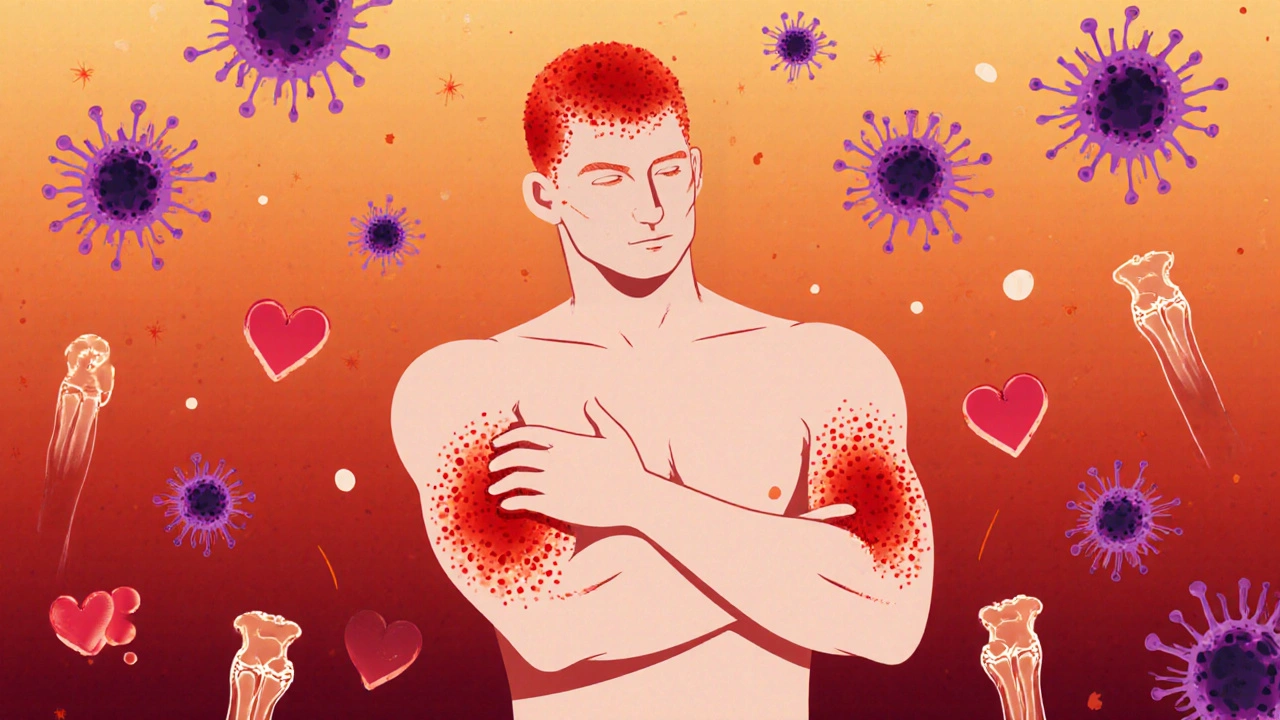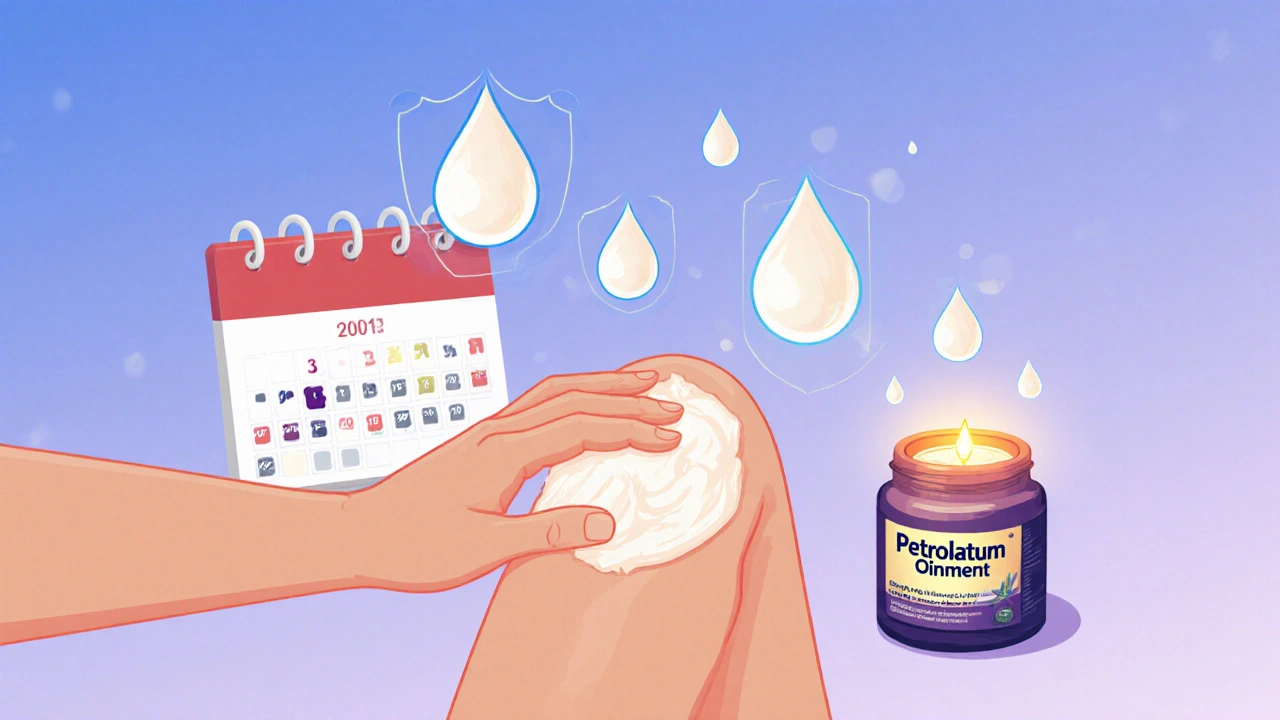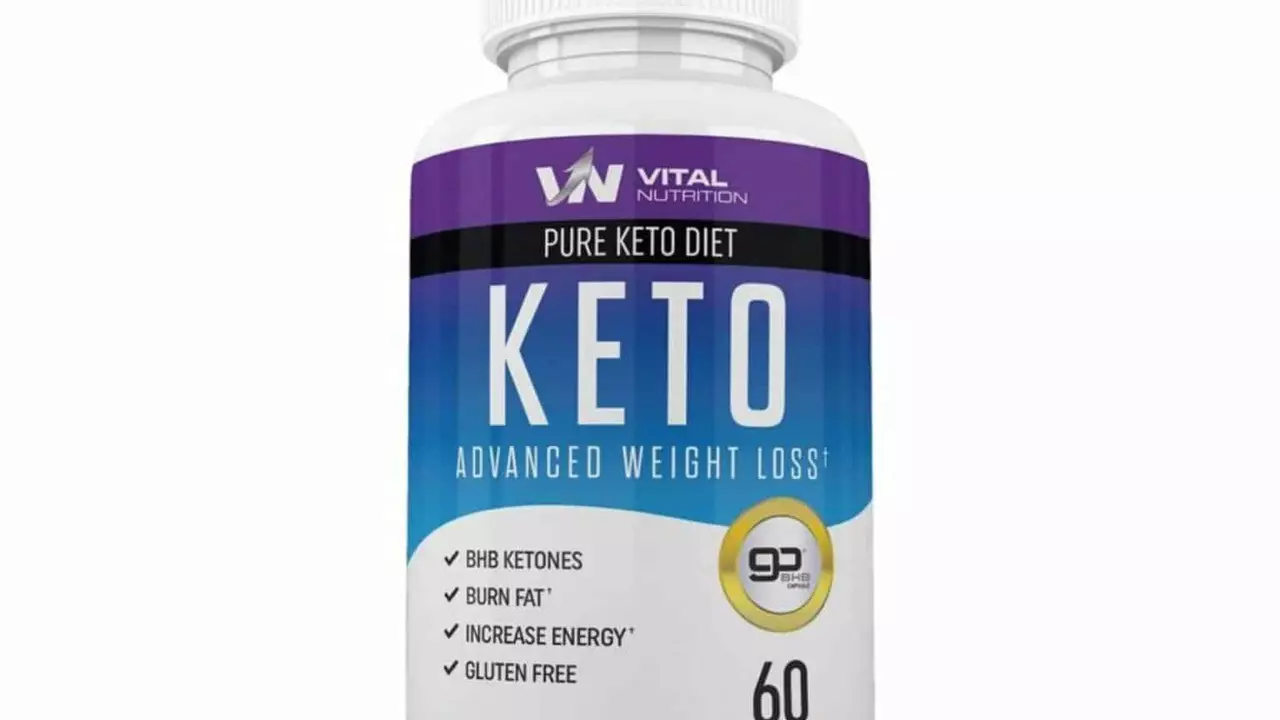
Psoriasis isn’t just a rash. It’s a lifelong battle where your immune system turns against your skin, forcing cells to multiply ten times faster than normal. What looks like dry, flaky patches on your elbows or scalp is actually a systemic disease - one that can affect your joints, your heart, and even your mental health. If you’re living with psoriasis, you know it’s not something you can just scratch off and forget. This isn’t a temporary flare. It’s a chronic condition that demands smart, consistent care - from what you put on your skin to what’s happening inside your body.
Understanding the Real Nature of Psoriasis
Psoriasis isn’t caused by poor hygiene or stress alone, though those can make it worse. At its core, it’s an autoimmune disorder. Your T-cells, which are supposed to fight infections, mistakenly attack healthy skin cells. This triggers inflammation and speeds up skin cell production from the normal 28-30 days down to just 3-4 days. The result? Thick, red, scaly plaques that itch, crack, and sometimes bleed. Eighty to ninety percent of people with psoriasis have the plaque type - those raised, silvery patches on knees, elbows, scalp, and lower back. But there are other forms too: guttate (small droplet-like spots), inverse (smooth, red patches in skin folds), pustular (pus-filled bumps), and the rare but dangerous erythrodermic type that covers large areas of the body and can be life-threatening.
The genetic link is strong. If one parent has psoriasis, your risk jumps to about 10%. If both do, it’s closer to 50%. It’s not contagious, but it’s far from rare. Around 2-3% of the global population lives with it - that’s over 125 million people. In the U.S., it affects up to 3.2% of people, with peaks in early adulthood and again around age 50-60. Scandinavia has the highest rates; East Asia the lowest. This isn’t just a skin issue. It’s a marker for deeper health problems.
Why Skin Care Isn’t Optional - It’s Foundational
No matter how advanced your treatment becomes, daily skin care remains the bedrock of managing psoriasis. Moisturizing isn’t just about comfort - it’s about breaking the itch-scratch cycle and reducing flares. Thick, petrolatum-based ointments work best because they lock in moisture better than lotions. Apply them right after a short, lukewarm shower while your skin is still damp. Avoid hot water and harsh soaps. Fragrance-free cleansers are a must. Even mild detergents can strip the skin barrier and trigger flare-ups.
Topical treatments are usually the first line of defense. The most common are vitamin D analogs like calcipotriol and low-to-mid potency corticosteroids. Many doctors combine them in one product - a move that improves adherence because you’re applying less frequently. But here’s the catch: long-term steroid use on thin skin (like the face, groin, or underarms) can cause thinning, stretch marks, or visible blood vessels. That’s why guidelines now recommend using them only for short bursts and switching to non-steroid options like calcipotriol or tacrolimus for maintenance.
Special areas need special care. Scalp psoriasis responds well to medicated foams or solutions - gels and shampoos that don’t require scrubbing. For nails, topical treatments often fail. Injections directly into the nail bed may be needed. Genital psoriasis? Avoid steroids altogether. Use gentle emollients and low-potency calcineurin inhibitors like pimecrolimus. The goal isn’t perfection - it’s control. Even small improvements in daily routines can reduce flare frequency by up to 40%.
When Topicals Aren’t Enough: Systemic Therapy Explained
If your psoriasis covers more than 5% of your body, affects your nails or joints, or tanks your quality of life, it’s time to consider systemic therapy. These are treatments that work from the inside out. They’re not just stronger creams - they’re medications that target the immune system’s overactive signals.
Traditional systemic drugs include methotrexate, cyclosporine, and acitretin. Methotrexate, taken weekly, suppresses immune activity and can clear plaques in weeks. But it requires monthly blood tests to check liver and kidney function. Cyclosporine works fast - often within 4-8 weeks - but it’s not for long-term use because it can raise blood pressure and harm kidneys. Acitretin, a vitamin A derivative, helps slow skin growth but can dry out your lips and eyes and isn’t safe for women who could become pregnant.
Then there are the biologics. These are injectable or infused drugs that target very specific parts of the immune system. TNF-alpha blockers like adalimumab (Humira) and etanercept (Enbrel) were the first wave. Now, newer ones like secukinumab (Cosentyx) and ixekizumab (Taltz) block IL-17, a key driver of inflammation. Guselkumab (Tremfya) targets IL-23, another critical pathway. These drugs aren’t cures, but they’re powerful. About 70-80% of patients on biologics achieve at least 75% skin clearance (PASI75). Many hit PASI90 - nearly clear skin.
There’s also apremilast (Otezla), an oral pill that works differently - it blocks an enzyme called PDE4. It’s less potent than biologics but avoids injections and has fewer monitoring requirements. Side effects like nausea and diarrhea often fade after a few weeks. It’s a good middle ground for people who want something systemic but aren’t ready for biologics.

The Hidden Costs: Comorbidities You Can’t Ignore
Psoriasis doesn’t live in isolation. Up to 30% of people with psoriasis develop psoriatic arthritis - joint pain, stiffness, and swelling that can permanently damage joints if untreated. Nail pitting, separation, or thickening is a red flag. If you have psoriasis and your fingers or toes ache, get checked. Early treatment can stop progression.
But the risks go further. People with psoriasis have a 58% higher risk of heart attack before age 50. Why? Chronic inflammation doesn’t just affect the skin - it damages blood vessels and increases plaque buildup. Up to half of psoriasis patients also have metabolic syndrome: high blood pressure, high blood sugar, excess belly fat, and abnormal cholesterol. Depression and anxiety are two to three times more common in psoriasis patients than in the general population. The visible nature of the disease leads to stigma, isolation, and shame. One study found that psoriasis impacts mental health as much as cancer or heart disease.
That’s why annual check-ups aren’t optional. Blood pressure, cholesterol, and blood sugar should be tracked every year. BMI should be monitored. Depression screening is now part of standard care guidelines. Treating psoriasis means treating the whole person - not just the patches.
Real-Life Treatment Challenges
Even the best treatments fail if you can’t stick with them. A 2023 survey of over 240 people on Reddit’s r/psoriasis found that 67% struggled with daily topical application. The mess, the smell, the time - it adds up. That’s why simplifying routines helps. Once-daily regimens improve adherence by 40% compared to twice-daily ones.
Biologics are highly effective - 82% of users report satisfaction. But cost is a huge barrier. Out-of-pocket costs can hit $1,200 to $5,500 a month without good insurance. Many patients skip doses or quit entirely because they can’t afford it. Even with insurance, prior authorizations, step therapy rules, and coverage delays can stall treatment for months. The National Psoriasis Foundation reports that 41% of patients delay or skip care due to cost.
Side effects matter too. Methotrexate can cause nausea. Cyclosporine can raise blood pressure. Biologics increase infection risk - you need TB and hepatitis screening before starting. Some people avoid them because they’re scared of injections. Others are overwhelmed by the logistics: weekly shots, clinic visits, cold storage, training sessions.
And yet, treatment discontinuation rates hit 30-50% within a year. It’s not because the drugs don’t work. It’s because the system doesn’t support the patient.
What’s Next? The Future of Psoriasis Care
The treatment landscape is changing fast. New oral drugs like deucravacitinib (Sotyktu), approved in 2022, target TYK2 - a protein inside immune cells. In trials, over half of patients achieved 90% skin clearance with just one daily pill. Other oral candidates in development aim to match biologic results without injections.
Doctors are shifting from a step-up model (start low, go slow) to a “right-care-first” approach. If your psoriasis is moderate to severe, you might skip topical trials entirely and go straight to a biologic or oral drug. This isn’t just about speed - it’s about preventing long-term damage from uncontrolled inflammation.
Research is also moving toward personalized treatment. Genetic testing may soon help predict which drug will work best for you. Some clinics are already using biomarkers to match patients with therapies. The goal? Not just clearing skin, but achieving complete or near-complete clearance (PASI ≤3, DLQI ≤4) - and keeping it there.
Support tools are growing too. Apps like MyPsoriasisTeam let you track flares, treatments, and triggers. Virtual support groups connect you with others who get it. QR-coded patient guides from dermatology societies offer quick, updated advice at your fingertips.
Final Thoughts: You’re More Than Your Plaques
Living with psoriasis means accepting that it’s part of your life - but not the whole story. You can have clear skin, active joints, and good heart health. It takes the right treatment, consistent care, and a team that sees you as a whole person. Don’t settle for partial relief. Don’t let cost or fear stop you from asking for better options. Talk to your doctor about your goals: Is it pain-free joints? No more itching? Confidence in a swimsuit? Those aren’t luxuries - they’re valid health outcomes.
Psoriasis may be chronic, but it doesn’t have to define you. With the right approach, you can live well - even when your skin flares. The tools are here. The science is advancing. You just need to keep pushing for the care you deserve.
Can psoriasis be cured?
No, psoriasis cannot be cured with current medical treatments. It is a chronic autoimmune condition, meaning the immune system continues to misfire even when symptoms are under control. However, modern therapies - especially biologics and newer oral drugs - can achieve near-complete or complete skin clearance for many patients. The goal is long-term management, not a one-time fix.
What triggers psoriasis flares?
Common triggers include stress, skin injuries (cuts, sunburns, scratches), infections (especially strep throat), cold weather, smoking, heavy alcohol use, and certain medications like beta-blockers or lithium. Some people notice flares after stopping steroids abruptly. Keeping a symptom journal helps identify personal triggers. For example, one patient might flare after drinking beer, while another notices it after a bad night’s sleep.
Are biologics safe for long-term use?
Biologics are generally safe for long-term use under medical supervision. They do increase the risk of infections like tuberculosis or fungal infections, which is why screening is required before starting. Regular monitoring - including blood tests and checking for signs of infection - is essential. Most patients tolerate them well for years. The benefits of controlling inflammation often outweigh the risks, especially since uncontrolled psoriasis raises the risk of heart disease and other serious conditions.
Why do some doctors still start with topical treatments?
Some doctors follow older guidelines - like those from NICE - that require trying topical treatments first. But newer evidence supports starting with stronger therapies for moderate-to-severe cases. The American Academy of Dermatology now recommends a "right-care-first" approach: if your psoriasis is impacting your life, you shouldn’t wait months to try effective treatments. Insurance rules and cost concerns often force a step-up approach, but you have the right to ask for a more aggressive plan if your condition warrants it.
How do I know if I have psoriatic arthritis?
Signs include joint pain, stiffness (especially in the morning), swelling in fingers or toes (dactylitis), lower back pain, and nail changes like pitting or separation. If you have psoriasis and any of these symptoms, see a rheumatologist. Early diagnosis and treatment can prevent permanent joint damage. A simple blood test and X-ray or ultrasound can help confirm the diagnosis. Don’t wait - joint damage from psoriatic arthritis is irreversible.
Is there a difference between psoriasis and eczema?
Yes. Psoriasis causes thick, red, scaly plaques with well-defined borders. It’s driven by immune overactivity. Eczema (atopic dermatitis) is usually more itchy, with dry, cracked, inflamed skin that lacks thick scaling. It’s often linked to allergies and asthma. Psoriasis plaques are typically less moist and more silvery than eczema patches. Location also differs: psoriasis favors elbows, knees, scalp, and lower back; eczema prefers inner elbows, behind knees, and face in children. A dermatologist can diagnose the difference with a visual exam - sometimes confirmed with a skin biopsy.






Shawn Daughhetee
November 22, 2025 AT 15:35Just wanted to say this post saved my sanity. I’ve been dealing with scalp psoriasis for 12 years and no one ever explains how much it messes with your head. The itch-scratch cycle is real and exhausting. I started using CeraVe Healing Ointment after showers and it’s been a game changer. No more bleeding when I comb my hair. Small wins matter.
Also never thought about how psoriasis links to heart health until now. Time to get my cholesterol checked.
Jessica Correa
November 23, 2025 AT 06:19I’m a nurse and I see so many patients give up on topicals because they’re messy or smell weird. You’re right about once-daily routines helping adherence. I started recommending the foam versions for elbows and knees and compliance jumped. No one likes slathering on greasy cream at 7am before work. Simplicity wins.
Also the mental health part? Real. One patient told me she stopped going to the pool because of her knees. That’s not just skin deep.
Mark Williams
November 24, 2025 AT 13:37From a clinical perspective, the shift toward right-care-first is long overdue. The step-up paradigm was rooted in cost containment, not evidence. Biologics targeting IL-17 and IL-23 have revolutionized outcomes - PASI90 isn’t a buzzword anymore, it’s the new baseline. The real barrier isn’t efficacy, it’s access. Prior auths take 3-6 weeks. Patients lose momentum. By the time they get approved, they’ve already disengaged.
Also worth noting: deucravacitinib’s TYK2 inhibition is a structural breakthrough. Unlike JAK inhibitors, it avoids off-target effects. Oral biologic equivalent? Maybe not yet, but it’s the closest we’ve gotten. The future is targeted, oral, and personalized. We’re entering a new era.
james lucas
November 25, 2025 AT 15:45man i wish i knew all this 5 years ago. i was using hydrocortisone on my elbows like it was lotion and wonderin why it kept comin back. then i got diagnosed with psoriatic arthritis and realized my knees had been achein for years and i just thought i was gettin old. now im on humira and my skin is 90% clear. the shot scares me but its worth it. no more flakin in my clothes.
also the cost thing is insane. my insurance only covers it if i try 3 other meds first. i had to pay 2k outta pocket for a month of otezla just to get approved. no one talks about that.
Michael Fitzpatrick
November 26, 2025 AT 19:45Reading this felt like someone finally got it. I used to think psoriasis was just a bad case of dry skin until I started noticing my nails lifting and my lower back stiffening in the mornings. Turns out I had psoriatic arthritis - and I didn’t even connect it until my dermatologist mentioned it. I was 32.
Now I track my flares with MyPsoriasisTeam. I log stress, sleep, what I ate, even the weather. Turns out beer and lack of sleep are my two big triggers. I still have bad days, but I don’t feel helpless anymore. The science behind this is wild - your immune system literally thinks your skin is an enemy. That’s why just moisturizing isn’t enough. You need to fight fire with fire. But you also need to be kind to yourself. Progress isn’t linear. Some weeks you’re 80% clear, others you’re back to square one. That’s okay. You’re still winning just by showing up.
And to anyone out there thinking they’re alone - you’re not. There are millions of us. We’re the ones wearing long sleeves in July. The ones who avoid swimsuits. The ones who Google ‘is this psoriasis or just eczema?’ at 2am. We’re tired. But we’re also stubborn. And we’re learning. Every day.
Psoriasis doesn’t define me. But it taught me how to advocate for myself. And that’s something no cream can give you.
Daniel Jean-Baptiste
November 28, 2025 AT 11:26from india i see a lot of people think psoriasis is contagious or caused by bad hygiene. its so frustrating. my cousin has it and family members avoid hugging him. he stopped going to weddings. i wish more people knew this is autoimmune not infectious. also the mental toll is huge here - no one talks about depression with skin issues. we need more awareness, not just treatment.
also the biologics are too expensive here. even if you can get them, insurance rarely covers. so most people just live with it. its sad.
luke young
November 29, 2025 AT 18:39Just wanted to say thanks for sharing this. I’ve been on apremilast for 6 months and honestly I thought it was too weak. But after 3 months my scalp stopped flaking and my nails stopped crumbling. It’s not perfect, but it’s enough. I’m not on a biologic and I don’t have to inject myself. Sometimes that’s the win.
Also the part about mental health? Yeah. I canceled plans for months because I didn’t want to show my arms. Now I wear short sleeves again. Small victories, right?
manish chaturvedi
November 29, 2025 AT 20:00As someone who has lived with psoriasis for over two decades, I appreciate the depth of this article. In my culture, chronic illness is often hidden, not discussed. But this - this is the conversation we need. The link to cardiovascular risk is critical. I now get annual cardiac screenings. My joints are better managed. I even started yoga. Not because it cures psoriasis, but because it calms the system that fuels it.
One thing missing: diet. While not a cure, reducing processed sugars and increasing omega-3s has helped stabilize my flares. Not for everyone, but worth exploring. And yes - the stigma still exists. But awareness grows. One post at a time.